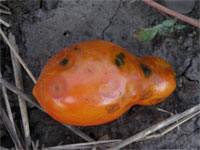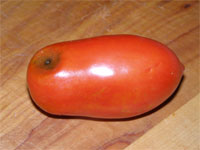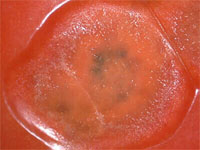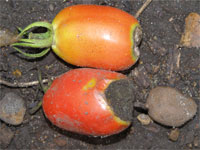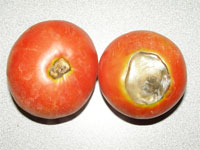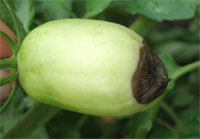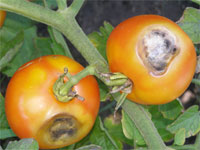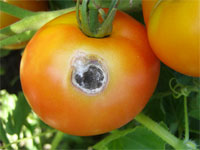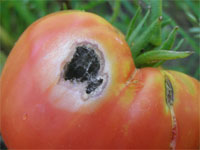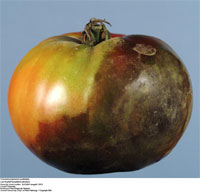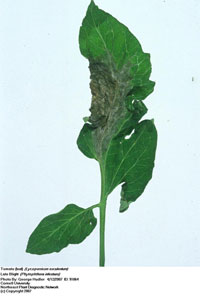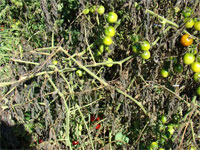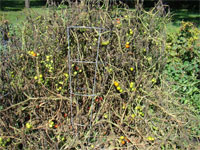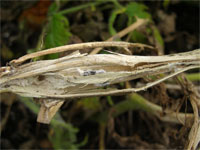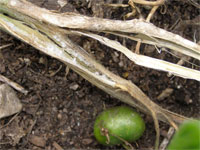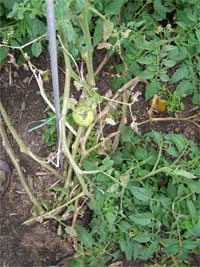Extension > Garden > Diagnose a problem > What's wrong with my plant? > Vegetable > Tomato > Soft and rotted fruit
Tomato > Fruit > Soft and rotted fruit
1 of 6
Anthracnose
Colletotrichum coccodes
- Infections are visible only on ripe and over ripe tomatoes
- Fruit spots are sunken and round
- Mature fruit spots have a black center
- Fruit spots produce pink spores with moisture
- No visible spots on leaves and stems
- More information on managing diseases in the home vegetable garden
2 of 6
Blossom End Rot
Abiotic
- Affects only fruit
- The bottom of the tomato turns tan and soft, then black, sunken, and rotten
- Fruit may look short or stumpy, not fully expanded due to rot
- Common when water levels vary from irrigation or drought followed by rain
- More information on Blossom End Rot
3 of 6
Alternaria Fruit Rot
Alternaria alternata
- Sunken round to irregular spot on fruit
- Center of the spot is fuzzy and black
- Spots occur anywhere on fruit, often on the sides or shoulders
- Can occur on ripe or green fruit
- More information on managing diseases in the home vegetable garden
4 of 6
Late Blight
Phytophthora infestans
- Irregular water-soaked lesions on leaves, turn olive then brown
- Leaves, stems and petioles turn brown and shrivel
- Fruit spot is round olive colored, can cover whole fruit
- Infected tissue is covered with white mycelia is wet weather
- Disease spreads very rapidly in cool wet weather
- More information on managing plant diseases in the home garden
5 of 6
Cold injury
- Leaves look water-soaked and soft, then turn black
- Fruit becomes soft water-soaked and rots
- Leaves show injury immediately, fruit may not show symptoms for 5 to 7 days
- Occurs at temperatures below 50° F
- Follow these tips on growing healthy vegetables
6 of 6
White Mold
Sclerotinia sclerotiorum
- Dark, firm watersoaked lesion on stem
- Girdled stems die and turn bone white
- Inside dead stems are black mouse poop shaped sclerotia
- Fruit are soft and rotted
- Cottony white mycelia inside and outside infected stems when humidity is high
- Favored by cool humid conditions
- More information on managing diseases in the home vegetable garden



